More often than not, adding a touch of greenery is precisely what you need to liven up your indoor space, create a relaxing environment, or add an element of design. But, finding the perfect houseplant can be a challenge, especially when light conditions are less than ideal.
Many houseplants require a significant amount of sunlight to thrive; however, there are numerous varieties that are more tolerant of low light conditions. This article explores the ideal houseplants like Sansevieria, Zamioculcas zamiifolia, Epipremnum aureum, and Spathiphyllum which exhibit an impressive ability to adapt and thrive in low light, making them perfect for spaces that see less of the sun.
Snake Plant (Sansevieria)
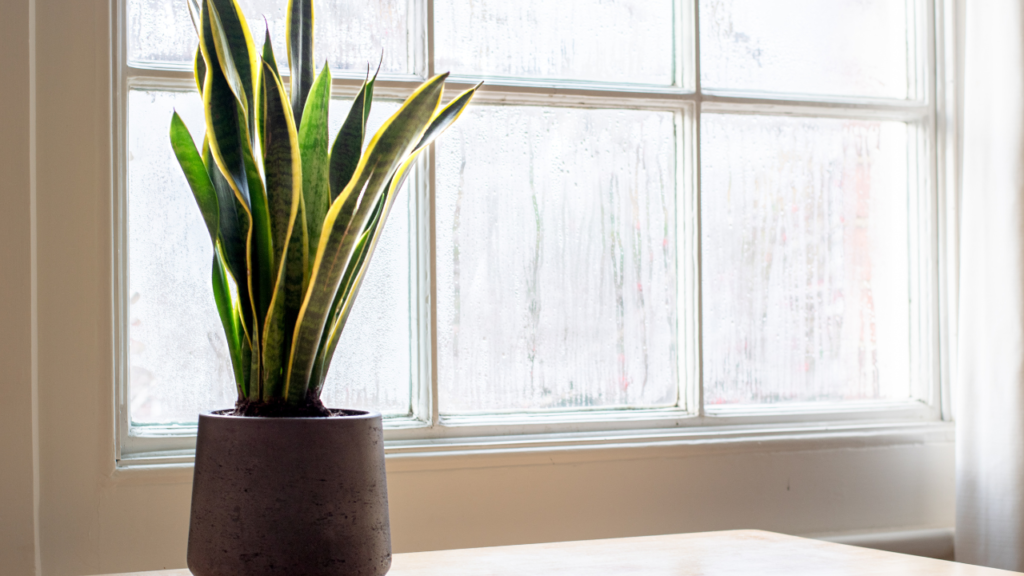
Green Thumb Not Required: The Resilient Snake Plant
The Snake Plant (Sansevieria) is practically bulletproof, making it an ideal choice for novice gardeners or those who haven’t had luck with houseplants in the past. This hardy species can thrive even under less-than-ideal conditions, such as low light, irregular watering, or temperature fluctuations. In fact, it’s more likely to suffer from too much care – overwatering is one of the few ways to harm this hardy plant. So, if you are a self-proclaimed ‘plant killer,’ the Snake Plant might just be your perfect match.
Aesthetic Appeal: Exotic and Architectural
Beyond its resilience, the Snake Plant adds a striking visual element to any interior setting. Its tall, upright leaves are typically green with edges of yellow or white, creating an architectural shape that adds height and dimension to your indoor garden. The foliage, arranged in a rosette pattern, bands or horizontal lines, is reminiscent of a snake’s skin—hence its name. Coming in a variety of shapes and sizes, the Snake Plant can fit any decor from minimalist to bohemian.
Convenient Air Purifier: Snake Plant’s Hidden Talent
Known as one of the top air-purifying plants, the Snake Plant is celebrated for its ability to filter indoor air, removing toxins such as formaldehyde, xylene, and nitrogen oxides. Unlike most other plants, it releases oxygen at night, making it a great addition to bedrooms for a fresh breath of air while you sleep.
Low Light, High Rewards
The Snake Plant’s tolerance for low light conditions is one of its key selling points. It doesn’t require direct sunlight to survive and grow. Instead, it can thrive in artificial light, like fluorescent light found in office buildings or apartments. Of course, the Snake Plant also doesn’t mind some indirect sunlight, so feel free to keep it near a window if you’d prefer.
In the end, the Snake Plant is more than just a trendy accessory—it’s a near-indestructible houseplant that can improve your home’s air quality and add a touch of nature to your living space.
House Plant Essentials
ZZ Plant (Zamioculcas zamiifolia)
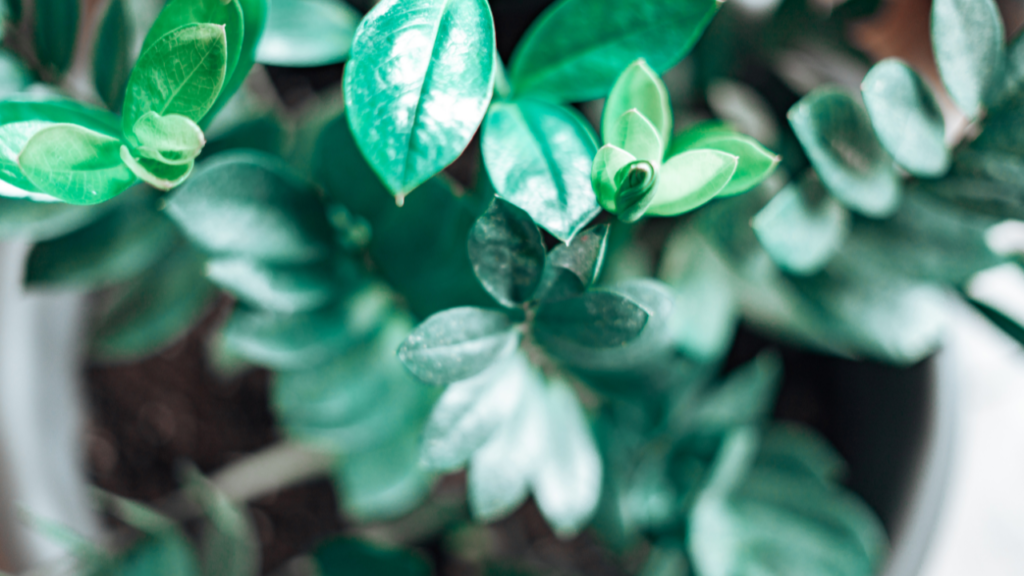
A standout in low-light interiors: ZZ Plant
Meet the ZZ Plant, also known by its scientific name Zamioculcas zamiifolia. This houseplant is an indoor enthusiast’s dream, particularly for those dealing with less than sunny conditions. With its waxy, glossy and dark green leaves, the ZZ plant adds a refreshing touch of vibrant greenery in even the dimmest corners of the home.
The perfect house plant for the neglectful gardener
What makes the ZZ Plant a favorite among houseplant owners is its tolerance to neglect. Known for its incredible drought-resistance, the ZZ Plant doesn’t require frequent watering. In fact, it’s more sensible to err on the side of under-watering as waterlogged soil can lead this hardy plant to develop root rot.
The plant that thrives on “less is more”
Whether you are a novice at gardening or someone who struggles to give plants the necessary attention they deserve due to a busy schedule, the ZZ Plant can be your perfect green companion. It needs very little care, thriving in low-light conditions with minimal watering, making it an easy addition to your low maintenance indoor plant collection.
Fan of indirect light: ZZ Plant
While the ZZ Plant is a low-light champ, it doesn’t mean it’s a fan of no light whatsoever. Kept in indirect, filtered light the ZZ Plant will grow best, though it can adjust to a variety of light levels. Direct sunlight, however, may scorch its attractive leaves, so this is best avoided.
Not just another pretty face
The ZZ Plant isn’t just a pretty face in the world of houseplants. On top of being eye-candy and easy to care for, it has the added benefit of being an air purifying plant. This plant species is known to purify indoor air by breaking down harmful pollutants. So not only does it brighten up your indoor space visually, it also contributes towards a healthier living environment.
Plant Care Tip: ZZ Plant
When it comes to ZZ Plant care, remember these three keywords: low light, minimal water, and well-draining soil. Stick to these, and your ZZ Plant should thrive. What’s more? With its long-lasting performance, you’ll enjoy the lush, tropical look it imparts to your indoor space year-round. It’s really the plant that keeps on giving!
Pothos (Epipremnum aureum)
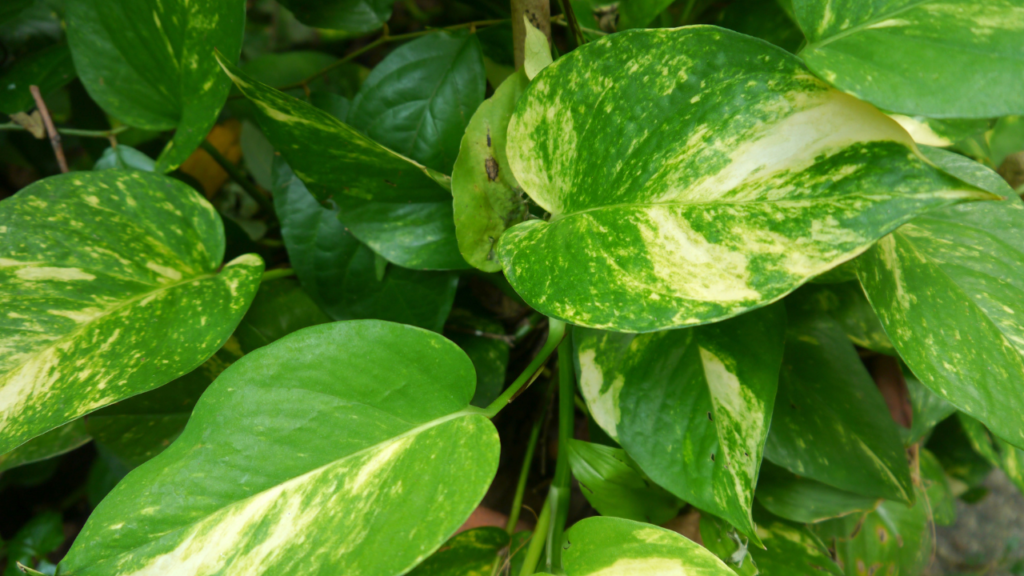
An Overview of Pothos or ‘Devil’s Ivy’
Pothos, commonly known as ‘Devil’s Ivy’, is a top pick for homeowners or office dwellers looking to add a touch of greenery in spaces with little to no sunlight. This plant is particularly celebrated for its versatility and adaptability as it can thrive in a wide range of conditions. Characterized by its distinctively attractive, heart-shaped leaves, Pothos brings an aesthetic appeal to any space. The color of the leaves can range from golden to green, and white or yellow, sometimes with a blend of colors, adding a delightful pop of color to dim corners.
Low Light, Low Maintenance: Pothos’ Key Features
Pothos is incredibly easy to care for, making it an ideal choice for budding plant enthusiasts or busy individuals who may not always have the time to tend to their indoor plants diligently. This low light houseplant prefers indirect sunlight, but it can also adapt and thrive in low-light conditions. Given its low-maintenance nature, Pothos makes a fantastic starter plant or an addition to a novice plant collector’s green family.
Air-Purifying Qualities
One standout feature of the Pothos plant lies in its air purifying properties. Not only does this plant beautify your indoor spaces, but it also works to clean the air. Research indicates that Pothos could purify indoor air of several common pollutants including benzene, formaldehyde, and xylene, thus contributing to a healthier living or working environment. This makes it as much a smart choice for your health as it is for your aesthetic preferences.
Despite its ominous nickname, ‘Devil’s Ivy’, Pothos is undoubtedly a heavenly houseplant for those looking to renew their spaces with minimal effort and maximum results. However, it’s important to note that Pothos can be toxic if ingested, so it’s best kept out of the reach of children and pets.
Peace Lily (Spathiphyllum)
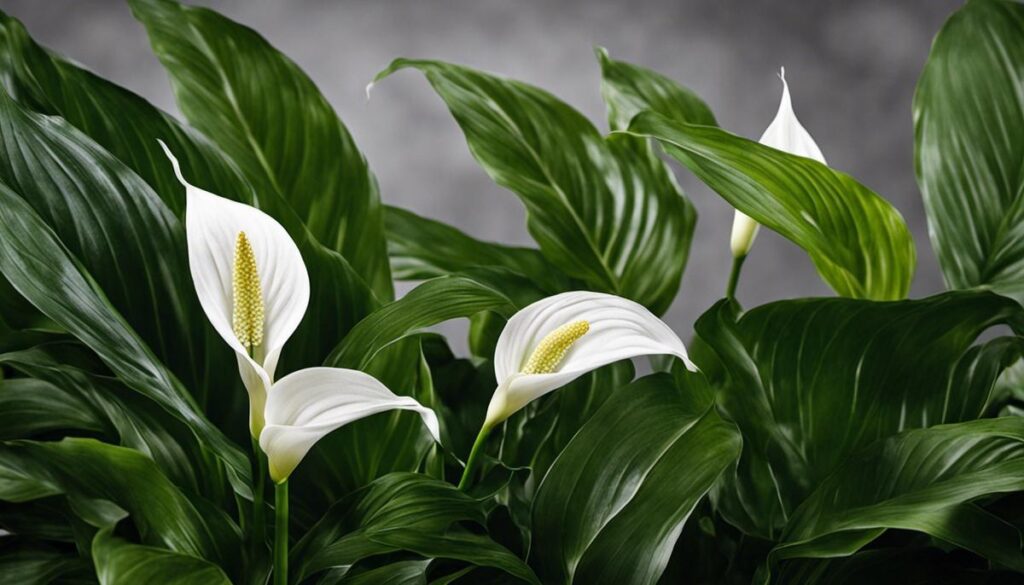
Peace Lily: Your Perfect Low-Light Companion
If you’re searching for a houseplant that not only thrives but flourishes in low-light conditions, meet the Peace Lily (Spathiphyllum). These tropical, evergreen plants hail from the rainforests of South and Central America and are well acclimated to thriving under a dense canopy of shade.
But the Peace Lily isn’t just known for its tolerance of low light. What sets it apart is its striking aesthetics. Amidst the glossy green leaves, the plant unexpectedly showcases unique white blooms, reminiscent of a white flag of peace – hence, the name.
For those navigating the corporate world, or perhaps going through school or college, the Peace Lily also makes for an ideal desk companion. The plant can prosper under fluorescent lights, meaning it can easily withstand the artificial lighting that inundates many office spaces and classrooms.
Then, there’s the benefit of air purification. A sturdy Peace Lily plant does an excellent job of improving indoor air quality. Research has shown that it helps break down and neutralize harmful gases like formaldehyde and carbon monoxide. So, it’s not just a lovely plant to look at – it’s also working around the clock to make your environment safer.
Taking care of a Peace Lily is reasonably straightforward. It does well in shady spots, and while it enjoys a good watering, it’s also reasonably tolerant of forgetful waterers. Known to droop a bit when thirsty, a quick hydration perk up is all it needs to resume its majestic stance.
In essence, the Peace Lily is more than just another houseplant. It’s a low-maintenance, low-light loving botanical marvel that brings a piece of the tropical rainforest into your personal or professional space – while offering a host of health and wellness benefits, too.
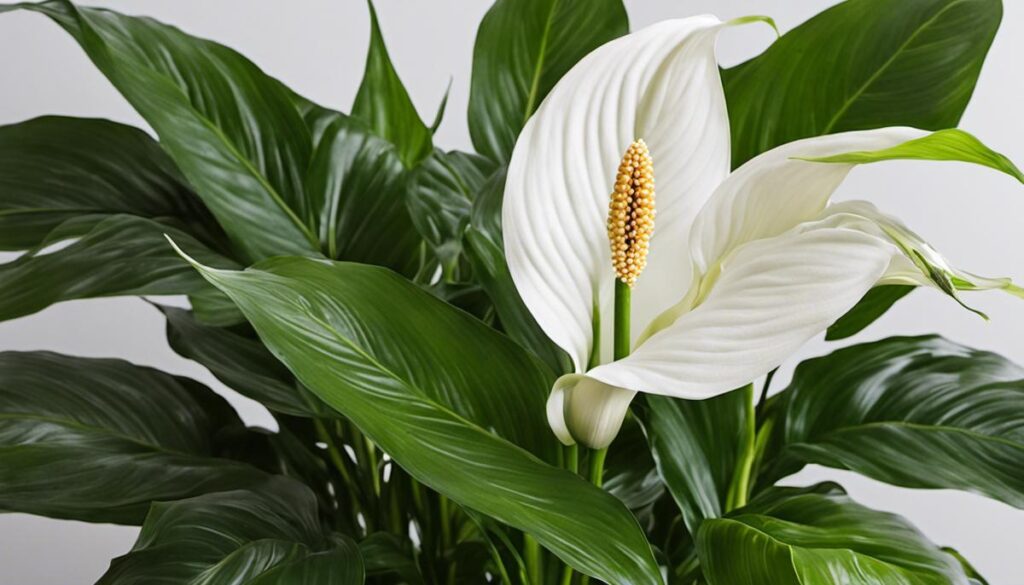
Bringing plants into your home can completely transform your space, create a calming atmosphere and even have health benefits by purifying the air. Whether you’re an experienced botanist or a rookie plant parent, finding the right plant for your space – and most importantly, your schedule – is essential. The snake plant, ZZ plant, pothos, and peace lily are all excellent choices for those looking to add some greenery to low light areas. These are hardy, easy-to-care-for plants that not only offer aesthetic appeal but also effectively improve indoor air quality. Remember, while these plants tolerate low light, they still need to be cared for. Tend to them and watch as they transform your indoor living spaces into beautiful green havens.
